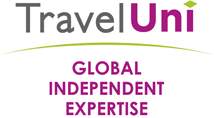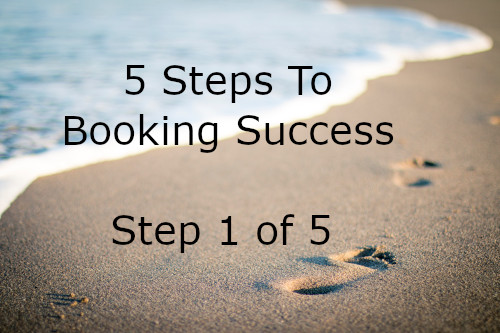Introduction
You do not have to be in the travel industry for very long to realise it is a highly competitive place to be. Travel Uni is dedicated to helping you get ahead of the competition and to stay there.
Here we are offering you some tips for booking success in 5 steps.
This is the first of our 5 steps.
Know your market
Which clients are earning you the best commissions? How well are you converting enquiries into bookings? How can you improve your conversions?
These are questions you need to answer if you are to improve your booking success.
If you are just starting out in the travel industry you are at a slight disadvantage but you can draw on the experience of your colleagues. And importantly, put systems in place now so that you can answer these questions for yourself later.
Experienced members of the industry should know which clients have generated the most commission for their business.
Let’s take time to look back at say your last 12 months and analyse your best (most profitable) 20 bookings. If you do not have a way to easily discover the most profitable here is a quick calculation you could apply.
Total booking commission divided by total hours taken to plan and book the trip = customer value
Example: £500 (Commission)/ 4 hours = £125 per hour
This will give you an hourly rate for the booking. Naturally the higher the hourly rate the higher the customer value. You are looking for the 20 bookings with the highest customer value.
When you look at the customer value of your top 20 what do you see? What is the range? Is it £5 per hour to £50 per hour or is it £125 per hour to £1000 per hour? You need to decide what you are worth. If the range isn’t high enough you’ll need to do something about it and you could make that a goal (we’ll cover goals in step 4).
In the meantime, take a closer look at the list. Are there any patterns? For example are they all families, or perhaps honeymooners? What are the most profitable products?
This analysis will lead you to your ideal clients and, all things being equal and the value high enough, you want more clients like these. Once you know what your ideal client looks like you can be choosier when the new enquiries come in.
And when those enquiries come in, how many do you need to convert one new booking?
When you think about the last 12 months do you know how many enquires you received and of those how many you converted. If you didn’t keep track, now is the time to start. Here is the simple calculation:
(Number of bookings made divided by number of enquires received) x100 = conversion rate
Example: (50 bookings/1000 enquiries) x 100 = 5%.
Naturally the higher the conversion rate the better. And the more you focus (as best you can) on attracting the type of client that matches your ideal, then the greater your chances of increasing your conversion rate.
After all, if this example were representative of your reality you would be dealing with 95% of enquires that go nowhere: that would be a waste.
Now you probably would like to know what the ideal conversion rate is. Well, there is no magic number because there are just too many factors to consider and they are different for every business. Just focus on yours and aim to make it better.
One sure fire way to improve your conversion rate is to qualify your enquiries. You want to know if that person contacting you qualifies as a potential customer. Do they come close to fitting the description of your ‘ideal’ client. Naturally the more you can filter out those who are unlikely to book at this stage, the more time you will have for the rest. And the higher your conversion rate is likely to be.
To summarise then.
- Think like the owner of a small business.
- Identify your ideal client.
- Know your value.
- Know your conversion rate.
- Aim at increasing your conversion rate by focusing more on your ideal client.
Once you know your market it is time to take a closer look at yourself and this you will do in Step 2.




